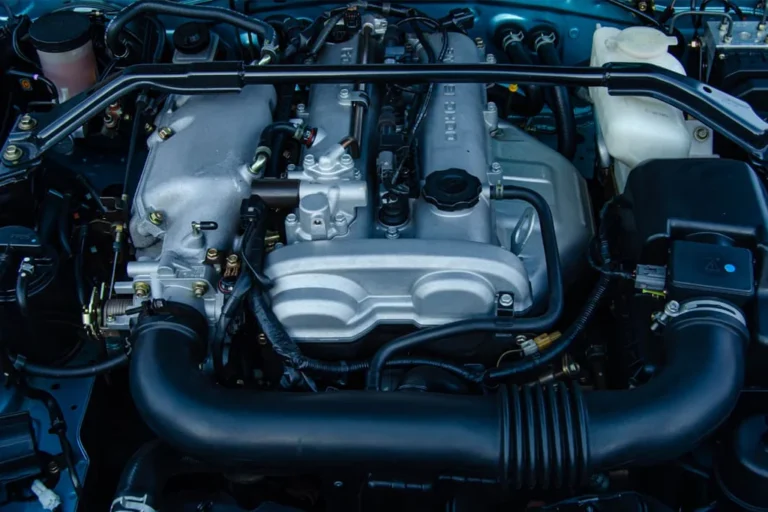Your car’s cooling system is what prevents the engine from overheating. Its components include the radiator, coolant temperature sensors, thermostat, expansion tank and pressure cap, heater core and hoses. Thermostats are spring-loaded valves that open and close based on the engine’s temperature. If they malfunction, it may take longer for your engine to warm up and start working.
Car Suspension
The suspension system in your car plays a vital role in the handling and comfort of your vehicle. It helps to support your vehicle’s weight, control bouncing, and maximize the contact area between your tyres and the road. It is important that your suspension system is working properly and regularly checked to ensure its performance.
A car suspension system contains several components, including coil springs, shock absorbers and struts. Coil springs help to absorb impact when your car goes over bumps, while shock absorbers and struts are used to control the impacts from those bumps and keep the tires in contact with the road surface.
Some cars also use suspension systems that include anti-roll bars to provide more stable and comfortable driving conditions. These systems are often more complex than the independent or dependent suspensions that most vehicles use. However, they are often limited by cost, packaging and weight constraints.
Some modern suspensions have been developed to minimize the number of cooling system parts and improve their reliability and efficiency. For example, a hydraulic system that was first introduced in 1962 on the Morris 1100 by suspension engineer Alex Moulton was called Hydrolastic. It used rubber cones on each wheel connected to the suspension units on both sides of the car suspension parts using a fluid-filled pipe that transmitted suspension forces. It was later replaced by a more advanced system known as Hydragas, which used metal spheres divided internally by a rubber diaphragm to allow pressurized gas to act as a springing medium.
Car Steering
Your steering system is responsible for turning your car’s wheels based on the inputs you make at the wheel. It combines many different components and technologies to allow you to perform basic road maneuvers without a lot of effort or stress.
When you turn the steering wheel, the movement is transmitted to a shaft that runs down either side of the car. This shaft is attached to a gear that meshes with teeth on a larger bar, called the rack, which runs at right angles to the steering wheel. The pinion gear turns the rack left and right based on your steering wheel movements. The rack is then coupled to your car steering parts knuckles via track rods (or tie rods).
Power steering uses hydraulic pressure from a pump to amplify the force you apply to the wheel, making it easier to steer the vehicle. The pressure is applied by sensors that detect when the driver turns the wheel and activates a valve to direct hydraulic fluid into a cylinder.
If you hear a screeching sound when turning your steering wheel, it could be due to worn rubber hoses that transport power steering fluid around the system. You may also notice puddles of pink or red fluid under your car, which indicates there is a leak in the system.
Turbo Parts
The heart of a turbocharged car’s powerplant, the turbo system requires careful design and execution to achieve its performance potential.
The turbine housing and wheel must be able to withstand the very high temperatures of hard usage and extended periods of time. This is why they are often constructed from materials such as ductile iron or nickel-content cast iron — to resist thermal fatigue and oxidation.
Likewise, the compressor bearings need to be able to withstand elevated temperatures, which is why many tuners choose to replace their stock journal-bearing turbo parts with water-cooled units. Cooler air going into the engine means lower friction, allowing for thinner bearing material and reducing so-called turbo lag.
A wastegate (internal or external) is a valve that bypasses exhaust flow from the turbine, and it can be opened or closed by pressure differentials (via the actuator). It helps to control the speed of the turbine and thus the amount of boost being applied by controlling the compressor’s speed and preventing it from over-speeding and/or running too hot.
Proper plumbing execution is also vital to minimise internal turbo temperatures – for example, by rotating the center housing so that cooler intake air enters on the low side and exits on the higher side. This reduces the build up of heat in the turbo’s less-heat-tolerant center housing and bearing system, which can otherwise cause catastrophic failure.
The Bottom Lines
Coolant, a mixture of water and antifreeze, circulates through the engine to pick up heat then passes through the radiator to be cooled by air. The cooling system also includes a thermostat valve and temperature sensor to control flow. Hoses are constructed from durable materials to handle high temperatures and pressures. They should be checked regularly for abrasions and leaks.
